Seven Questions Over Breakfast with Richard Holland
 November 30th, 2010 by jules
November 30th, 2010 by jules
 I pulled this “seven questions over breakfast” illustrator interview series out of the air in 2008 (with the wonderful Jeremy Tankard as my first victim) precisely for folks like British illustrator Richard Holland, visiting me this morning for a coffee
I pulled this “seven questions over breakfast” illustrator interview series out of the air in 2008 (with the wonderful Jeremy Tankard as my first victim) precisely for folks like British illustrator Richard Holland, visiting me this morning for a coffee
Q & A. Essentially, I wanted to have a covers-the-basics questionnaire handy in order to shine the spotlight on new illustrators in the field of children’s lit—to get a quick overview of what they’ve done and where they’re heading—and Richard fits snugly into that category. New, that is. He’s illustrated five titles thus far in his career, and it was his collage work on Jan Mark’s The Museum Book and Martin Jenkins’s The Time Book (both released by Candlewick in 2007 and 2009, respectively, after first being released in the UK) that caught my attention. This year, he also illustrated Tanya Landman’s Mary’s Penny (also Candlewick), a re-telling of a traditional fable, pictured below. (“Soft colors and the lightest of lines echo the gossamer touch used to deliver the feminist moral,” wrote Publishers Weekly.)
 If you haven’t seen The Museum Book and The Time Book (both nonfiction titles), you’re in for a treat. I suppose it all comes down to personal preference, but I say that, even if you’re not a fan of collage, Richard might change your ways. Publishers Weekly wrote about his mixed-media collage work in The Museum Book, “Holland…jolts readers…with his mixed-media collages, which sparingly employ color and liberally combine what look like Victorian engravings, pencil sketches, Gorey-like figures, and photos of various locales. His stylish compositions play with perspective, type and design, making excellent use of the vertically oriented pages…” These are spreads to pore over, taking in Richard’s creative interpretations of our histories of both collecting and watching our clocks.
If you haven’t seen The Museum Book and The Time Book (both nonfiction titles), you’re in for a treat. I suppose it all comes down to personal preference, but I say that, even if you’re not a fan of collage, Richard might change your ways. Publishers Weekly wrote about his mixed-media collage work in The Museum Book, “Holland…jolts readers…with his mixed-media collages, which sparingly employ color and liberally combine what look like Victorian engravings, pencil sketches, Gorey-like figures, and photos of various locales. His stylish compositions play with perspective, type and design, making excellent use of the vertically oriented pages…” These are spreads to pore over, taking in Richard’s creative interpretations of our histories of both collecting and watching our clocks.
For our chat this morning, Richard opts for “pain au chocolat, double espresso, and a glass of iced water, please!” I’m happy to oblige. Double espresso. Oh the lengths I go to for this blog. (Since he also offers up a cappuccino e brioche later in the interview, I made sure to picture one below.) Let’s get right to it, and I thank him for stopping by…
Jules: Are you an illustrator or author/illustrator?
Richard: Illustrator.
Jules: Can you list your books-to-date?

Richard:
- Ali Baba, Mantra Publishing
- Yeh Hsein, Mantra Publishing
- The Museum Book, Walker Books/Candlewick Press
- The Time Book, Walker Books/Candlewick Press
- Mary’s Penny, Walker Books/Candlewick Press
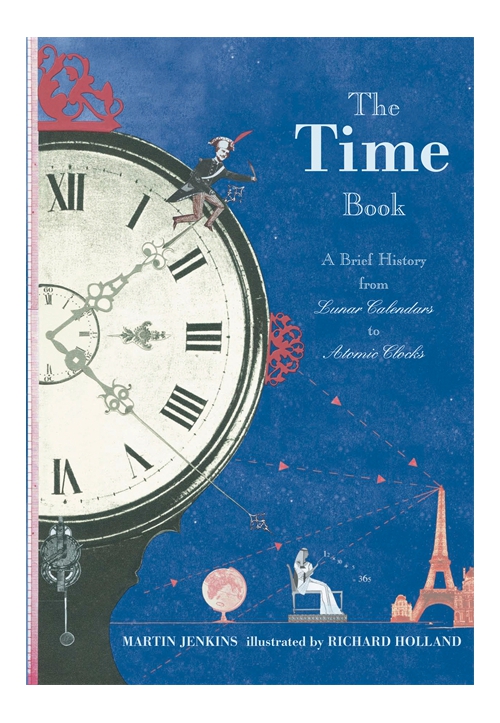

Jules: What is your usual medium, or––if you use a variety—your preferred one?
Richard: Collage, mixed media, drawing.
(Click to enlarge spread.)
But Mary had a very special, secret something: Mary had brains.”
— Two spreads from Tanya Landman’s Mary’s Penny (Candlewick, 2010)
(Click to enlarge spread.)
Jules: If you have illustrated for various age ranges (such as, both picture books and early reader books OR, say, picture books and chapter books), can you briefly discuss the differences, if any, in illustrating for one age group to another?
Richard: The Museum Book and The Time Book were both nonfiction books. The subject matter allowed great freedom and variety within each spread. Mary’s Penny was more of a character-based picture book, and there needed to be a consistency and warmth to the central characters. It also had a lighter feel with little elements of humor and warmth added for the slightly younger reader.
girls couldn’t run farms.”
(Click to enlarge spread.)
Jules: Where are your stompin’ grounds?
Richard: I live in Essex, a short train ride from London. London for me is such a great, creative, energetic city.
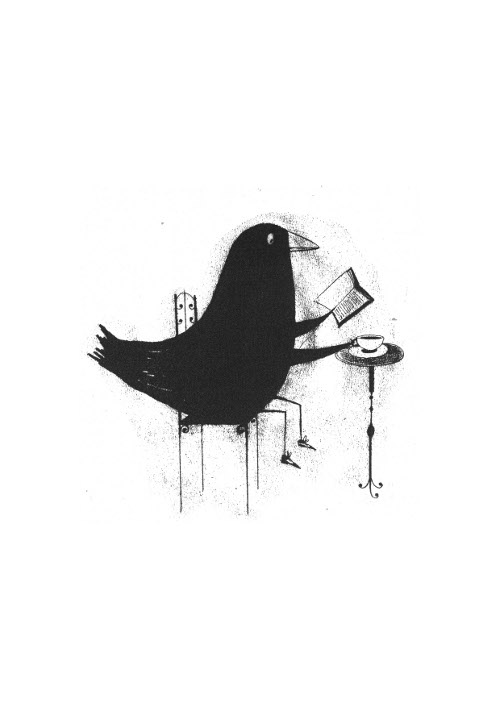
Jules: Can you briefly tell me about your road to publication?
Richard: After studying illustration at University, I tried to establish a way of working that I was happy with. Collage had always intrigued me; my early influences at University were George Braque and Richard Hamilton. I love the stages of collage: First, you draw the image on the paper, then you cut it out, then you stick it down. It’s that space between each process that new ideas can evolve.
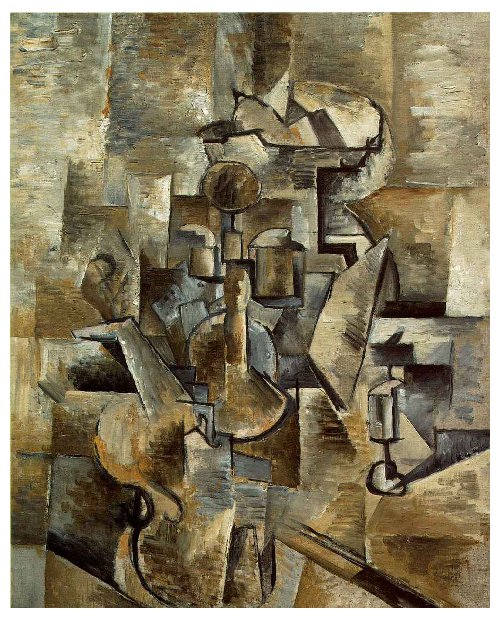
(image in the public domain)
My first commissioned picture books were with Mantra Lingua, Ali Baba and Yeh Hsien. It was these two projects where I first started to mix the collage with other forms of art-making. It also gave me that valuable insight into the process of creating a picture book.
I was then given an opportunity to work with Walker Books and the late Jan Mark. Jan had written a wonderful guide to strange and wonderful collections. The text almost forced my hand into the way I work today. I had to find that balance between the printed elements and the drawing. The variety of imagery and subject matter that the text required enabled me to explore and experiment. Each spread could be different from the next. Text could be moved. It was an illustrator’s dream. An exploration into tackling subjects from two-headed sheep to Peter the Great!

A Guide to Strange and Wonderful Collections
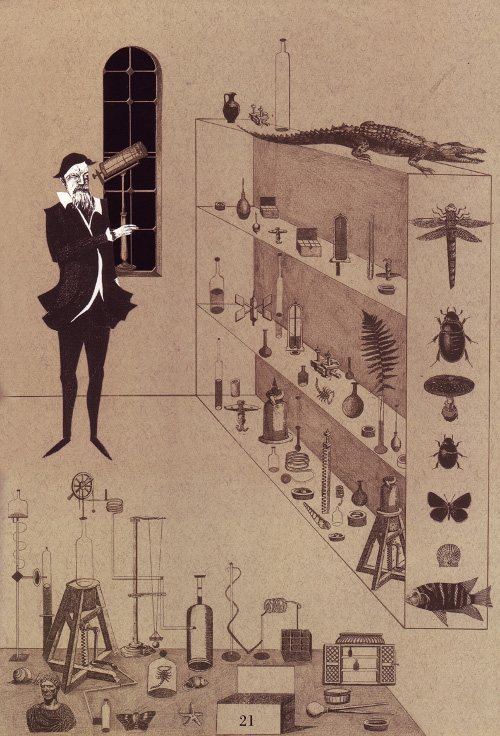
Illustration from The Museum Book (Candlewick, 2007)
Jules: Can you please point readers to your web site and/or blog?
Richard: My website is currently being built.
Jules: Any new titles/projects you might be working on now that you can tell me about?
Richard: A book about a brilliant, creative, methodical chef {from} Walker Books/Candlewick and a follow-up to The Time Book, {also from} Walker Books/Candlewick.
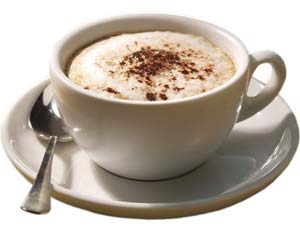 Okay, table’s set. Here’s our cappuccino, and let’s keep on keepin’ on. We’re ready to get a bit more detailed…
Okay, table’s set. Here’s our cappuccino, and let’s keep on keepin’ on. We’re ready to get a bit more detailed…
1. Jules: What exactly is your process when you are illustrating a book? You can start wherever you’d like when answering: getting initial ideas, starting to illustrate, or even what it’s like under deadline, etc. Do you outline a great deal of the book before you illustrate or just let your muse lead you on and see where you end up?
Richard: Illustrating a picture book is a unique and very personal journey. From the challenge that the text offers and the first rough sketches through to the final artwork, you are always confronted by new problems to solve.
The early stages of the book are for me the most enjoyable; the layout and the feel of the book are crucial. Once the initial thumbnails and roughs are complete, I find it really helpful to make a small dummy book. This enables me to see the flow of the book, how each spread works in relation with the next. I love to see the turning of each page, the positioning of the text, and the space that surrounds the image.
and I’m sure we’d all agree that it drags when you’re not…”
Black-and-white detail from Martin Jenkins’s The Time Book: A Brief History from Lunar Calendars to Atomic Clocks (Candlewick, 2009)
(Click to enlarge.)
Collage has a unique ability to surprise you. It’s a very old-fashioned medium, and I love the hands-on approach. The scale with which you cut out the object or the positioning on the page means that the spread can constantly evolve.
I’ve never been tempted to replicate this on the Mac, although recently I have found scanning in my roughs and moving them around in Photoshop a great help.
I love searching and discovering for that old bit of paper. Over the years, I’ve collected a large selection of patterns, coloured papers, old Victorian images of buildings, and dapper-dressed characters.

Illustration from Martin Jenkins’s
When I’m happy with the general composition, I cut out the shapes and lay everything out on the page. Sometimes you notice the balance of colour or the scale of objects needs to change.
I also like to work on a variety of spreads simultaneously. It keeps you fresh and gives you a wider feel of the book.
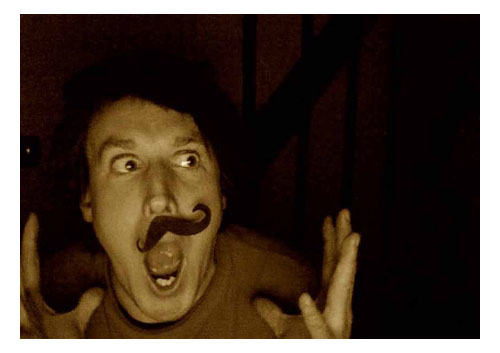
2. Jules: Describe your studio or usual work space.
Richard: I love my little studio. It’s a space where I can create, think, listen to music, be untidy, drink coffee, drink beer, a completely bespoke space of utter unorganized chaos!
I seem to work well early in the morning. There is something calming about walking down to the garden to work.
It’s unusually tidy for these photos:
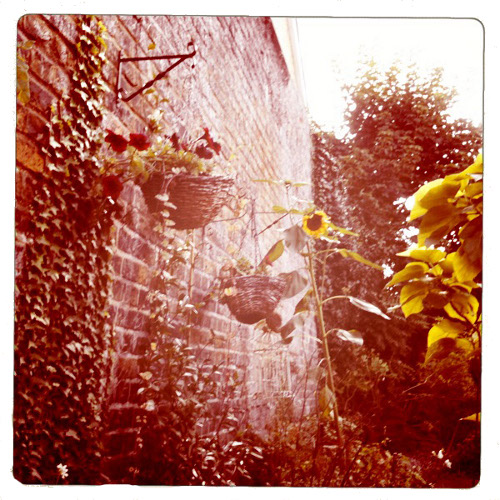

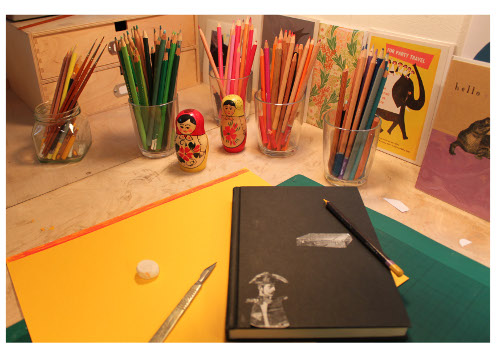
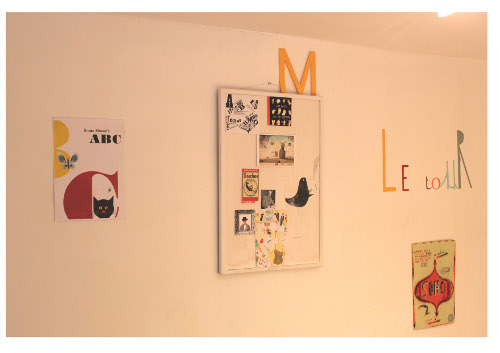
3. Jules: As a book lover, it interests me: What books or authors and/or illustrators influenced you as an early reader?
Richard: Enid Blyton. Roald Dahl. I also had two very old copies of Treasure Island and Swiss Family Robinson, which I read to death. I then got into Arthur Conan Doyle and Agatha Christie. A murder mystery in an English village is unbeatable.
Recently, {I’ve enjoyed} Victor Hugo, Gabriel García Márquez, Will Self.
so you’d better go in quietly.”
Illustration from The Museum Book: A Guide to Strange and Wonderful Collections (Candlewick, 2007)
(Click to enlarge spread.)
Illustration from The Museum Book
(Click to enlarge spread.)
4. Jules: If you could have three (living) illustrators or writers—whom you have not yet met—over for coffee or a glass of rich, red wine, whom would you choose?
Richard: Could I possibly have four? PLEASE!
 I’d like to choose Sara Fanelli, Bruce Ingman, Beatrice Alemagna, and Laura Carlin.
I’d like to choose Sara Fanelli, Bruce Ingman, Beatrice Alemagna, and Laura Carlin.
Sara Fanelli’s books will always inspire me — her great sense of design, her wonderful hand lettering. I’d rustle up a cappuccino e brioche.
Bruce Ingman’s When Martha’s Away is a truly beautiful book. His work is wonderfully fresh, and I love the simplicity of the line. A Night on the Tiles has the BEST front cover EVER! I’d cook Bruce a full English breakfast with a gigantic mug of tea.
Beatrice Alemagna combines collage with beautiful drawing, and her book Un Lion a Paris is stunning. I’d love to just chat illustration with her. I’d serve her pain au chocolat and coffee.
Finally, Laura Carlin: Her drawing and subtle mark-making is so, so special. I’ve recently been given her new book, The Iron Man. It’s one of the most inspiring illustrated books. I’d serve Laura a large bottle of red wine and a gigantic plate of pancakes.
(Click to enlarge.)
“Humans are the only animals that have invented calendars and mechanical clocks, but it seems that most, perhaps all, other living things have ways of measuring time.”
(Click to enlarge.)
“So why is it so difficult to set up a regular calendar?
It has to do with the way the solar system works.”
(Click to enlarge.)
5. Jules: What is currently in rotation on your iPod or loaded in your CD player? Do you listen to music while you create books?
Richard: Oh, yes. I love listening to music while I create! Éric Satie, Laura Marling, Rolling Stones, Radiohead, BBC Radio 4, Agatha Christie’s Marple. Read by Joan Hickson. The Who, The White Stripes, Goldfrapp, Nick Drake, Sting and The Police, Coldplay, Air, Jimi Hendrix, Jack Johnson, Pink Floyd, José González, Bjork, Beck, Elbow, Muse, Mumford & Sons, Beethoven, Lou Reed, Vivaldi. Oh, and ABBA!
6. Jules: What’s one thing that most people don’t know about you?
Richard: My cat, Evie, is the great-great-granddaughter of Napoleon’s cat!
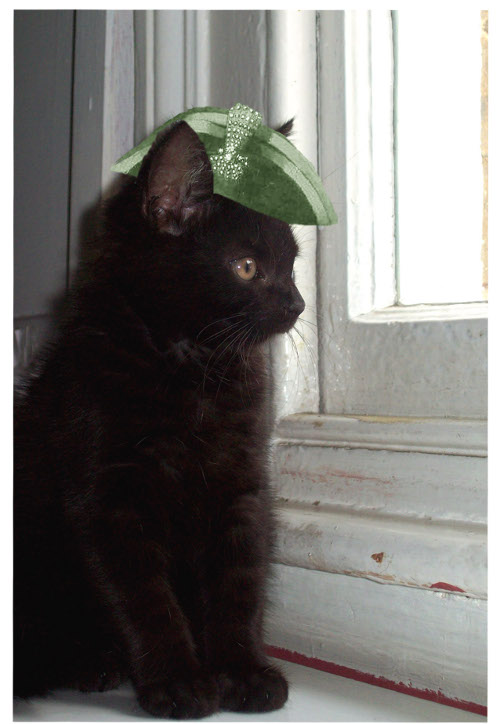
7. Jules: Is there something you wish interviewers would ask you — but never do? Feel free to ask and respond here.
Richard: Would you like to have a retrospective of your work in the Louvre in Paris?
YES!
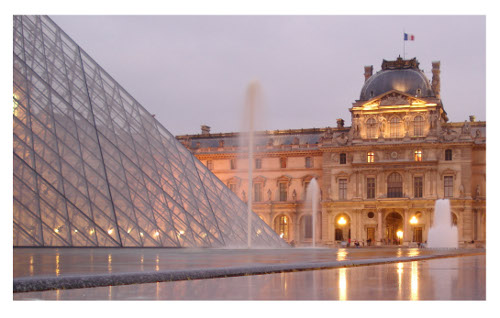

Jules: What is your favorite word?
Richard: “Dapper.”
Jules: What is your least favorite word?
Richard: “Greed.”
Jules: What turns you on creatively, spiritually or emotionally?
Richard: Creatively, the start of a new project with all the intensity and a myriad of fresh ideas. Spiritually, the French Alps as the sun is rising on a fresh winter’s day.

Emotionally, remembering the inspiring wise words and love my late grandparents gave to me.
Jules: What turns you off?
Richard: Negative thoughts. Life is far too short to worry.
Jules: What is your favorite curse word? (optional)
Richard: “Sacré bleu!”
Jules: What sound or noise do you love?
Richard: The rain against a window and the crackle of a roaring fire.
Jules: What sound or noise do you hate?
Richard: A dentist’s drill.
Jules: What profession other than your own would you like to attempt?
Richard: Architect, garden designer, furniture-maker, captain of arsenal football club! Roger Federer! Winner of le Tour.
Jules: What profession would you not like to do?
Richard: George Gideon Oliver Osborne, Chancellor of the Exchequer.
Jules: If Heaven exists, what would you like to hear God say when you arrive at the Pearly Gates?
Richard: “You done good!”
(Click to enlarge.)
THE MUSEUM BOOK. Text copyright © 2007 Jan Mark. Reproduced by permission of the publisher, Candlewick Press, Somerville, MA on behalf of Walker Books, Ltd., London.
THE TIME BOOK. Text copyright © 2005 Martin Jenkins. Illustration copyright © 2005 Richard Holland. Reproduced by permission of the publisher, Candlewick Press, Somerville, MA on behalf of Walker Books, Ltd., London.
MARY’S PENNY. Text copyright © 2010 Tanya Landman. Illustration copyright © 2010 Richard Holland. Reproduced by permission of the publisher, Candlewick Press, Somerville, MA on behalf of Walker Books, Ltd., London.
All other artwork and photos used with permission of Richard Holland (with the exception of the book covers). All rights reserved.
The spiffy and slightly sinister gentleman introducing the Pivot Questionnaire is Alfred, © 2009 Matt Phelan. Thanks to Matt, Alfred now lives permanently at 7-Imp and is always waiting to throw the Pivot Questionnaire at folks.
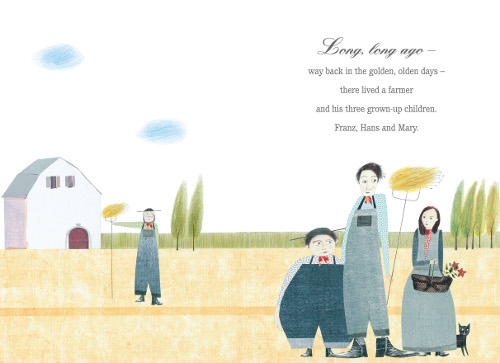
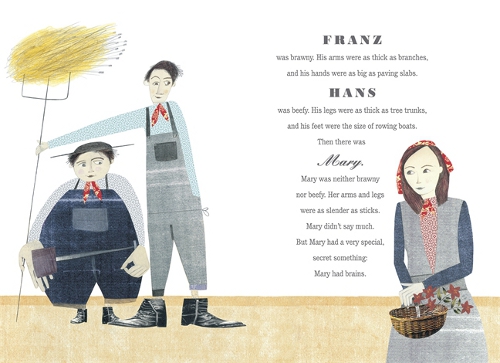
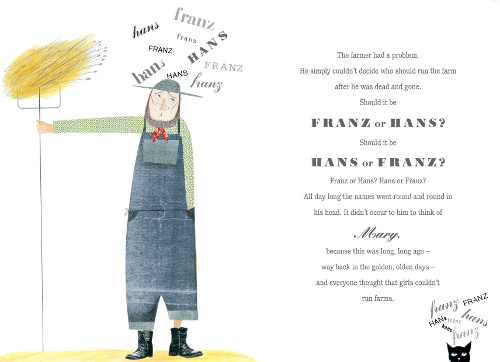
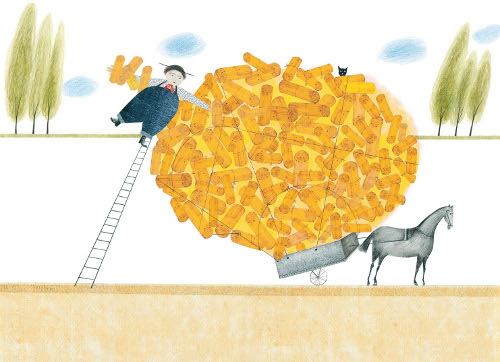
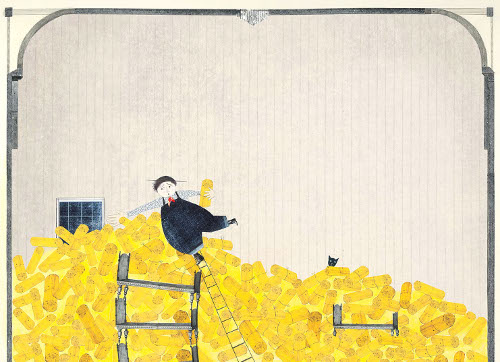
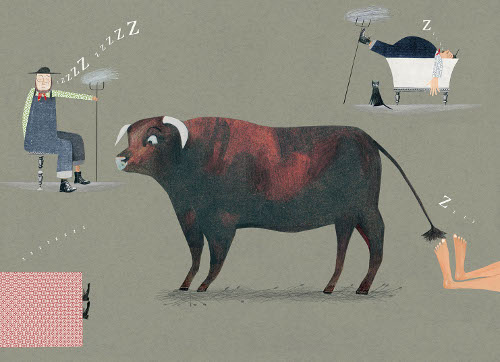
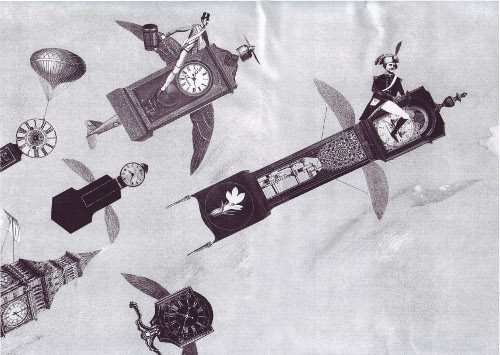
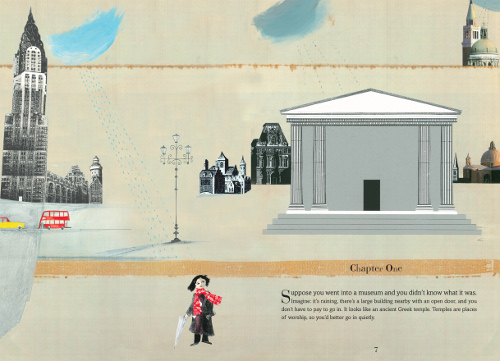
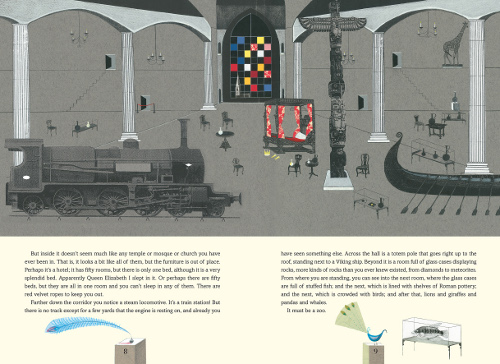
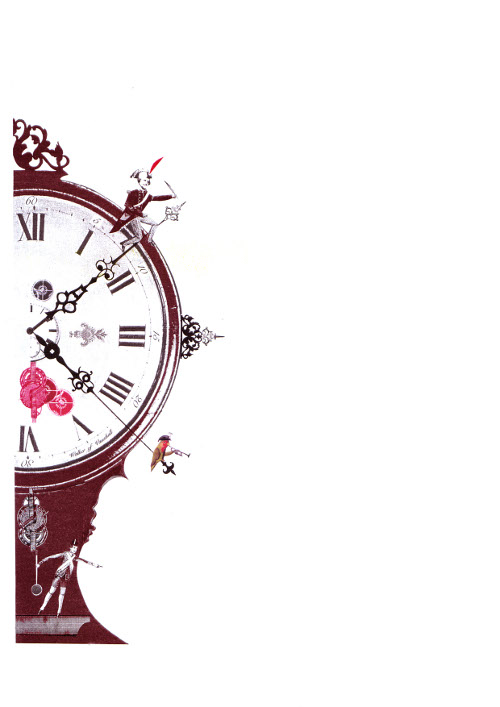


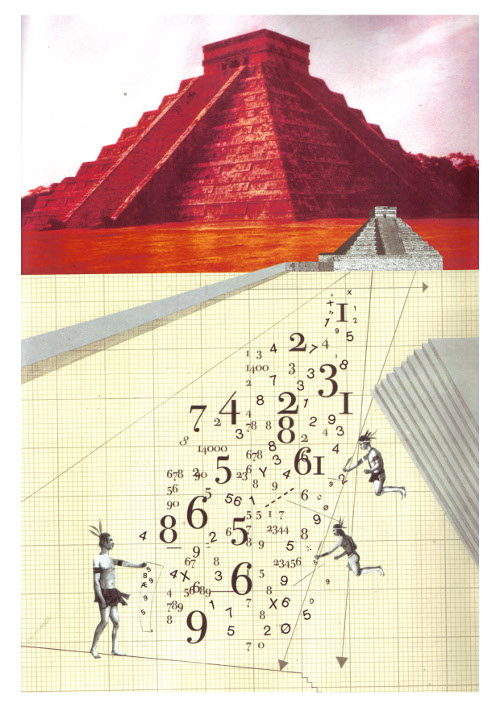

*swoon*
Thanks so much for the heads up on Richard’s work! I’ve always been a fan of collage, and I love his precision and cleanness. Love the flying clocks and the Hans-Franz spread especially :).
His answer to the “creative, spiritual, emotional” turn on question is the best I’ve read thus far. And the pain au chocolat and big plate of pancakes did not escape my notice, no, not one little bit. Evie is gorgeous! Is that her in the Hans-Franz spread? Also the deadline day moutache. My life is complete!!
Thanks to both of you.
Trully amazing work! Superb Mr Holland! :-)xxx
I don’t think you need to wait to go to heaven before you hear ‘You done good!’ as evidently you already have….keep up the good work!
Loved this interview and reading about my super talented something cousin something removed 🙂 (did we ever work out what it was??) Thanks for the books, hope to see you soon, love Lucy, Dan and our own little Evie xx
A sequel to THE TIME BOOK? YEA YEA YEA! I love his work – he’s one of my all time favorites, hands-down.
And THE IRON MAN is now officially on my radar. If Holland was inspired than it is a must read for sure.
Thanks for this, Jule. I hope it brings him a lot more fans!
Should read “Jules”!!!! Stupid “s” key!
I’ll take Jule, too, Colleen.
Thanks, all! Glad you enjoyed it. Thanks again to Richard for stopping by.
Glorious interview – how have I not come across his books – aaaargh! This shall be rectified tout de suite – sacre’ bleu! And love the cat 🙂